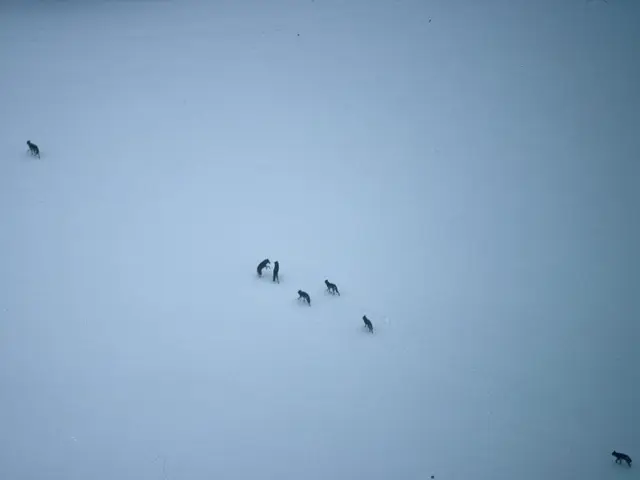"The Monument Known as 'Topography of Terror': A Structure Almost Unimaginable in Existence"
In the bustling area of Berlin, near Potsdamer Platz, Gropius Bau, and Checkpoint Charlie, lies a unique historical site - the Topography of Terror. This internationally recognised centre of remembrance has become a beacon of education and confrontation with the dark chapters of Germany's past.
The Topography of Terror serves as a quiet counterpoint to the city's vibrant life, its deliberate architectural restraint harmoniously blending into the urban environment. The site was the centre of Nazi terror rule from 1933 to 1945, with the Gestapo, SS, and Reich Security Main Office having their headquarters in Prinz-Albrecht-Straße (now Niederkirchnerstraße). During Allied air raids, most of the buildings on the site were destroyed.
Initiatives by citizens, historians, and journalists in the late 1970s brought attention to the central place of Nazi terror, and for decades, the area was a "forgotten" place where traces of the Nazi past were visible but not explained. It was not until 1987 that a first exhibition opened in a provisional pavilion, laying the foundation for the later Topography of Terror.
A new competition in 2005 resulted in the winning design by the Berlin office Heinle, Wischer & Partner and landscape architect Heinz W. Hallmann, featuring a sober, restrained architecture. However, an earlier design for the permanent memorial and documentation centre by architect Peter Zumthor in the 1990s was abandoned due to construction problems, insolvencies, and escalating costs. The design that was ultimately realised in 2010, impresses with its clarity and transparency.
The permanent exhibition inside the Topography of Terror building covers around 800 square meters, providing a comprehensive insight into the structures of the NS state and its terror apparatus. The outdoor space features exposed basement remains of the Gestapo headquarters and remains of the Berlin Wall. An exhibition trench with 15 stations was created along the historical wall course, providing additional information about the site's history.
Especially in times when anti-democratic tendencies are gaining strength, the significance of such places is hard to overestimate. The Topography of Terror contributes to democratic education, confrontation with guilt and responsibility, and sensitization for the dangers of hostility towards people and abuse of power. It is not just a place for silent remembrance, but active and visible enlightenment about the past, serving as a reminder for the future.
The Topography of Terror is one of the most visited memorial sites in Germany, attracting several million visitors annually. It stands as a testament to the power of architecture and education in preserving history and shaping a better future.
Read also:
- Impact of Alcohol on the Human Body: Nine Aspects of Health Alteration Due to Alcohol Consumption
- Understanding the Concept of Obesity
- Tough choices on August 13, 2025 for those born under Aquarius? Consider the advantages and disadvantages to gain guidance
- Microbiome's Impact on Emotional States, Judgement, and Mental Health Conditions







